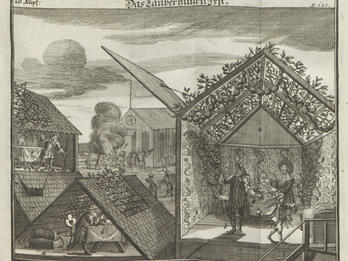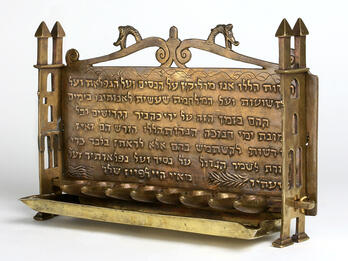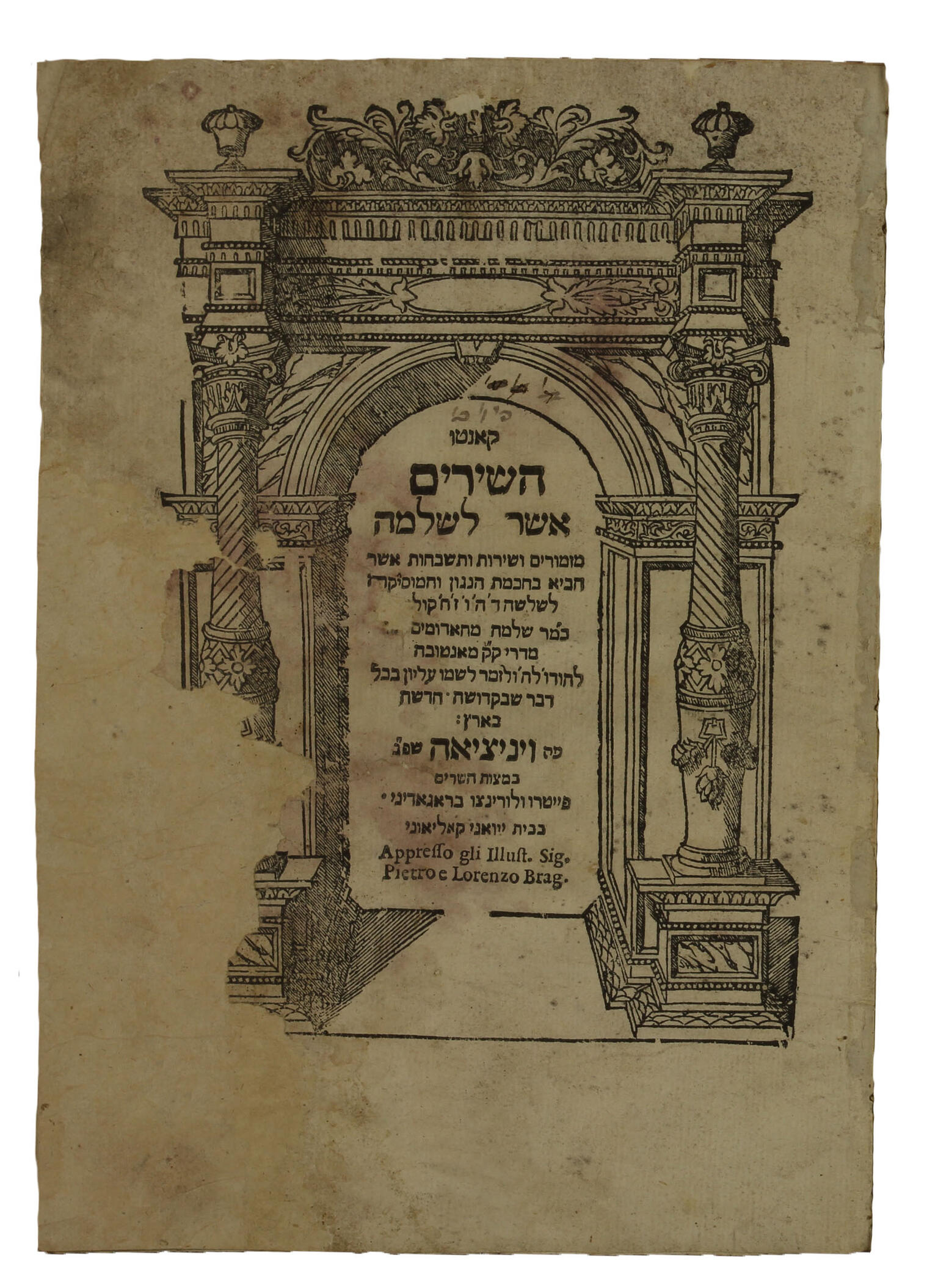Ha-shirim asher li-Shelomoh (The Songs of Solomon)
Salamone de Rossi
1622/23
Creator Bio
Salamone de Rossi
Salamone de Rossi was the most prominent Jewish composer of the late Italian Renaissance, as well as the last (and possibly most important) Jewish court musician. He served the Gonzaga rulers of Mantua, entering the service of Duke Vicenzo I as a singer and viola player in 1587. He later became leader of an ensemble of mainly Jewish musicians that achieved some fame and was even loaned to neighboring courts. In 1606, he was freed from the requirement of wearing the Jewish badge. De Rossi remained in the service of the duke until 1622. Following the death of the last Gonzaga and the sack of Mantua, de Rossi fled to Venice. He composed more than three hundred works, published between 1589 and 1628, including secular vocal works in Italian, instrumental music, and sacred songs. His most important work is Ha-shirim asher li-Shelomoh, thirty-three settings for three to eight voices, for Hebrew texts used in festive synagogue services.
Related Guide
Early Modern Italy: Where East and West Meet
Ashkenazim, Sephardim, and Marranos encountered each other in Italian cities, developing community structures that later influenced Jewish communal organization throughout the western world.
Related Guide
Early Modern Jewish Languages
As Ashkenazi and Sephardi Jews migrated eastward, Yiddish and Ladino emerged as distinct languages. Both languages developed literary traditions, as print became more widespread.
Related Guide
Early Modern Literature and the Arts
Jewish literary creativity flourished in the early modern period, dominated by Hebrew poetry that blended religious themes with Renaissance forms.
Ha-shirim asher li-Shelomo (The Songs of Solomon) was printed in Venice. It contains thirty-three settings, for three to eight voices, of the melodies of Hebrew texts used in festive synagogue services. It was the most important work of Salamone de Rossi, a prominent Jewish composer of the late Italian Renaissance.
You may also like

Sukkot
Arugat ha-bosem (Bed of Spices)
Shilte ha-giborim (Shields of the Mighty)





